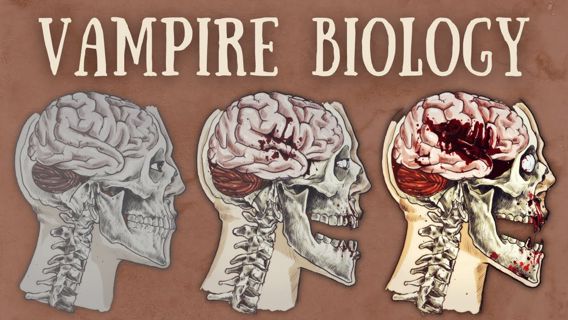
Throughout the annals of history, a tapestry of mythical creatures has woven its way into the fabric of human culture, straddling the nebulous boundary between the realms of imagination and reality. From the awe-inspiring forms of ogres and dragons to the enigmatic allure of werewolves and giants, these fantastical fables have transcended cultural and temporal divides, captivating hearts and minds for generations. Among this pantheon of spectral beings, none stand as prominently as the vampire, an enigmatic entity driven by an insatiable thirst for human blood, forever etching itself into the collective psyche of humanity. In this profound exploration, we embark on a captivating odyssey, peeling back the layers of myth to uncover the concealed biological truths that might just lie beneath the surface of vampire legends.
The Genesis of Vampire
Vampire myths, like tendrils of a sprawling vine, have wound their way into the rich tapestries of cultural narratives across the globe. From the remote reaches of Russia's strigoi to the Philippines' manananggal, these beings share a common thread: an unquenchable desire for human blood. While the roots of these legends trace back through time, it was the narratives of 12th-century Europe that solidified the framework of the contemporary vampire archetype. Yet, it was the literary prowess of authors like Bram Stoker, who crafted the iconic "Dracula," and the cinematic masterpiece "Nosferatu," that lent further definition to our modern perceptions of these creatures of the night.
Unmasking Vampires: A Biological Hypothesis
Amidst the skeptical dismissal of vampire folklore as mere flights of fancy, a bold hypothesis dares to emerge—one that posits a kernel of scientific plausibility lurking within the shadowy realms of myth. With the torch of scientific curiosity illuminating the path, we delve into the tantalizing notion of vampires as bearers of a virus, a phenomenon known as the Human Vampiric Virus (HVV). This hypothetical pathogen infiltrates its host's cells, triggering a transformative cascade that culminates in the emergence of the vampire.
The Cryptic Vampiric Slumber and Transformation
The transition from mortal to immortal is a metamorphosis shrouded in cryptic vampiric slumber, a phase marked by flu-like symptoms, a racing heart, and an insatiable thirst that mirrors the legendary creature's lust for blood. Upon awakening from this profound slumber, the nascent vampire undergoes a series of striking physical alterations: limbs elongate, canines extend into fangs, and the once-vibrant complexion pales into a spectral hue. The influence of the virus heightens the senses, gifting the vampire with a nocturnal vision akin to that of their bat cousins, acute auditory acuity that captures even the faintest whisper of sound, and an uncanny ability to discern intricate patterns in their surroundings.
Enhanced Abilities and Adaptive Characteristics
The viral intervention goes beyond mere superficial changes, endowing vampires with a suite of superhuman abilities that defy the boundaries of human potential. Heightened strength, agility, and endurance become their birthright, a result of intricate shifts in muscle composition and metabolic processes. As their once-pulsating heart slips into dormancy and their circulatory system undergoes a profound transformation, the telltale pallor of their skin becomes a hallmark of their new existence. The article delves into their capacity to enter states of hibernation, a mechanism that not only conserves their newfound energy but also offers insight into their unique methods of sourcing vital nutrients.
The Essence of Blood and Dietary Evolution
The concept of vampires subsisting on human blood is far from novel, yet this exploration takes readers on a fictionalized journey into the mechanics of vampiric digestion. Their entire digestive system undergoes an evolution to accommodate the consumption of blood, while their microbiome adapts to efficiently process the iron-rich sustenance. This adaptation, fascinatingly, affords vampires the ability to sustain themselves through minimal feeding cycles, a dietary strategy that safeguards prey populations from irrevocable depletion.
The Enigma of Immortality and Perpetual Youth
The beguiling traits of agelessness and immortality, often inseparably linked to the vampire, find speculative elucidation within the article's pages. Augmented telomerase activity, an upsurge in the production of antioxidants, and DNA repair mechanisms that are finely tuned all contribute to the vampire's uncanny resistance to the ravages of cellular aging.
Deconstructing Legendary Fallacies
No exploration of vampires would be complete without an unraveling of the fabric of conventional myths. The purported aversion to sunlight, the dread of crucifixes, and the notion of invisibility in mirrors are deftly deconstructed, revealing these facets as rooted not in the supernatural but in unique physiological sensitivities.
In Closing
Though firmly rooted in the realm of speculative fiction, this exploration underscores the undeniable interplay between scientific inquiry and the art of imaginative storytelling. Within this vividly painted depiction, vampires materialize as a mesmerizing fusion of scientific principles and creative narratives. Ultimately, the timeless allure of vampires serves as a testament to the enduring potency of human imagination, seamlessly blurring the demarcation between mythology and reality.
Follow Mr history to stay updated on their latest posts!
0 comments
Be the first to comment!
This post is waiting for your feedback.
Share your thoughts and join the conversation.
